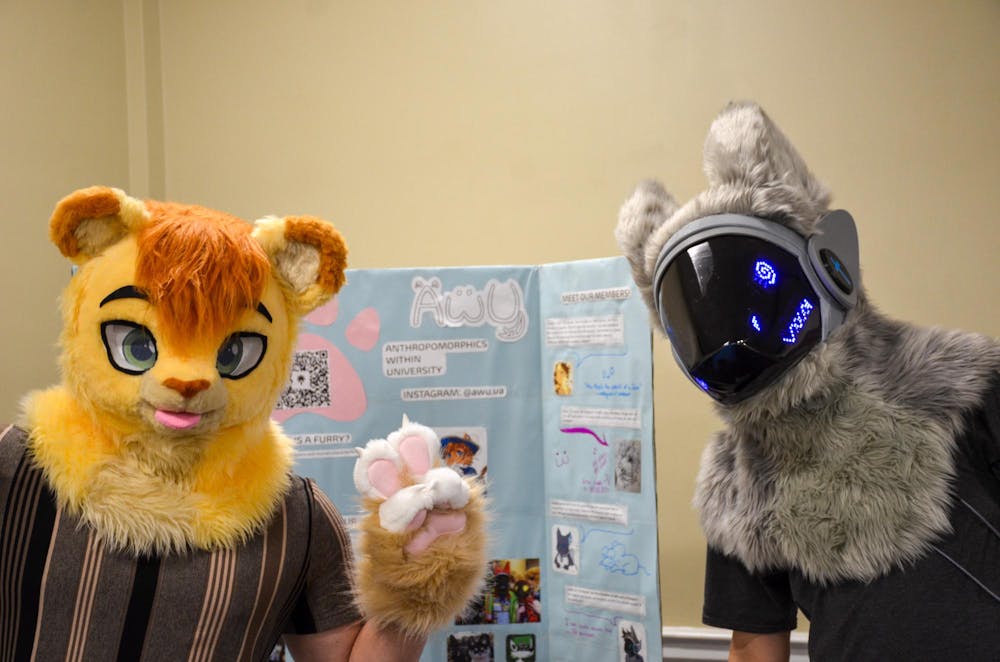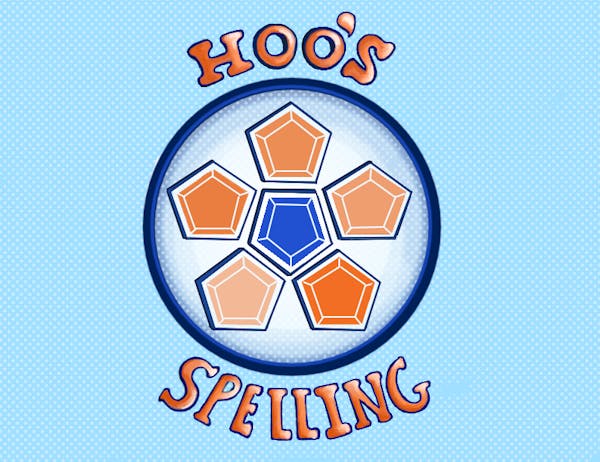Around 30 students and community members gathered Friday in Newcomb’s Commonwealth Room in the name of Furscience. The University’s furry club, Anthropomorphic Within University, hosted a Zoom presentation with social psychologist Dr. Courtney Plante to learn about his team’s renowned study called the International Anthropomorphic Research Project — which they commonly refer to as “Furscience.”
The “furry fandom,” as it is colloquially known, is a group of people whose personalities are defined in large part by their strong interest in anthropomorphic animals, which are animal characters that adopt human-like traits — both behaviorally and physically — such as those found in Disney movies or on children’s toys. A large component of the furry identity is the “fursona” or the animal-themed persona or avatar that 94 percent of furries create to represent themselves.
Furscience, Plante’s research project, is a collection of studies that aim to understand the psychology relative to furries in comparison to that of the general public. Besides being lead data analyst for the Furscience project and an associate psychology professor at Bishop’s University, Plante is a proud member of the “furry fandom” himself. Nearly 14 years in the making, his comprehensive Furscience research consists of about 50 total studies with 30,000 furries across 70 countries.
In December 2023, the Furscience team published a book entitled, “Furscience: A Decade of Psychological Research on the Furry Fandom,” which uses science-backed data to debunk misconceptions about the furry community — such as that furries have poor mental health, sexual fetishes and unfulfilling social lives — and chip away at its stigma.
Referred to among AWU as his fursona’s name, “Leander,” president of AWU and fourth-year Batten student, asked to remain anonymous. He organized Plante’s talk to shed light on the realities of the furry community and increase exposure for the club itself. Leading up to the event, Leander said that Plante’s talk would not be any different than other research presentations by scholars on Grounds.
“People come to speak at U.Va. about research they've done all the time, and it's treated as a legitimate academic study. [Furscience] is … psychological research that will be presented at the event, and it’s about our club,” Leander said.
While up until now, he had been diligent to avoid unmasking at AWU events, Leander felt that with membership of the club growing, it was time to host something front-facing with the community.
“I am afraid of backlash,” Leander said. “This event [will] be the first time that [AWU is] open to the public … I wanted to give [the club] more publicity.”
At the event, members of AWU tabled behind two displays. One was spread with furry-themed pins and drawings, a copy of the Furscience book and even the head and paws of a furry suit. The other exhibited an informative poster about AWU’s activities and its wider goal of expanding its influence and increasing membership — and a Virtual Reality furry head, of course.
Plante began his talk by answering the million-dollar question — what exactly does it mean to be a furry? As it turns out, he said, the answer is complex and nuanced. He revealed that ultimately, the furry spectrum is quite broad, and the question of the furry identity varies from person to person. Despite the wide array of understandings, the fandom is united by their strong common interest in anthropomorphic animals.
“[If] you ask 10 furries, you get 11 answers as to what a furry is,” Plante said.
Plante discussed that furry activities do not look so different from fans of a different niche and compared it to more mainstream fandoms like professional sports teams and video games. Plante stressed that for furries, however, this hobby has become prominent enough to be a keynote characteristic of their persona.
“You gotta like this stuff enough that it's sort of a label that you use to describe yourself,” Plante said. “It’s not just an interest, but it's also the identity that kind of comes along with that interest.”
According to Plante, furries typically enjoy drawing fan art, attending conventions and practicing cosplay. He said that nearly every furry has a fursona that they assume during furry functions, and described his own fursona as an “amalgamation” of who he is and who he would like to be.
“[My fursona is] like me, but a better version of me. It's me if I was stronger, faster, smarter, more clever,” Plante said. “It’s like an idealized version of you.”
Separate from the fursona, one of the most prominent misconceptions about furries is that everyone dresses up in a “fursuit” — a customized avatar outfit that embodies the fursona they have created for themselves.
With less than half of the furry population owning one, Plante described owning a fursuit as an “iconic, but not obligatory” facet of furry identity and cited steep prices for the customization as a roadblock. Still, he said that suit ownership is increasing among the community, and for good reason.
“[Wearing a fursuit] is an opportunity to behave differently than [furries] would in day-to-day life,” Plante said. “You're becoming a character. [The fursuit] frees you up to act in a more audacious way, to act more outgoing, more confident.”
Amid describing all the aspects of what it means to be a furry, Plante made sure to specify what a furry is not. He led this laundry list of misconceptions by debunking the widespread belief that furries think that they are animals. In fact, Plante specified that those kinds of people identify as Therians, a separate niche entirely. He said that furries simply have a strong interest in anthropomorphic animals and enjoy talking and consuming content about them, drawing them and occasionally dressing as them.
Additionally, he touched on the especially common misconception that furries have some sort of sexual kink or fetish. Plante said that the research found that sexual elements are very rarely the motivators behind joining the fandom. In actuality, the furry community’s social aspect proved to be the primary drive.
“We pitted sexual motivation against non-sexual motivations [to see] which one is the better predictor of being a furry … [the result] was entirely driven by this non-sexual motivation,” Plante said. “Maybe there's some sex part there for some folks, but overwhelmingly, [being a furry] is driven by [the] social factor.”
Plante said that the furry community is actually inherently social, and that events like furry conventions play a large role in fostering close relationships between members.
According to Plante, outsiders of the furry community also make baseless claims regarding their mental health. He said that many people hastily assign furries some type of mental illness or assume a lack of life satisfaction simply because they are different from the norm. In reality, said Plante, the furry fandom is a group of fulfilled, successful people in search of a like-minded community.
“When a fan group comes along that's different from your prototype, your immediate assumption is, what is wrong with this?” Plante said. “We go looking for dysfunctional explanations. [We think] this must be mental illness.”
Plante and his team examined mental health patterns relative to furries, screening for various forms of mental illness and overall satisfaction with life. Fortunately, their findings supported that the mental well-being of furries was akin to separate groups of people of a similar age range.
“If looking for a diagnosis, you're not really going to find it in the furry fandom,” Plante said.
Plante wrapped up the event by emphasizing one of his main points, “Don’t Fix the Furry.” Backed by both his Furscience research and his personal experiences in the community, he said that furries are competent, capable people who — like most of us — just seek connection.
“There's a misconception that furries are basement dwelling, single people who never leave their house,” Plante said. “There's no evidence to suggest that furries are any more or less out of touch than anyone else. At the end of the day on Monday morning, furries come back from the [furry] convention and go back to their nine to five office job.”
Fittingly, the event moderator — AWU treasurer who goes by the name “Lyca” in the furry community — concluded Plante’s talk by asking for barks and howls from the crowd. After closing statements, an AWU member and first-year Architecture student who asked to remain anonymous said that the event allowed him to share his interest with community members outside of the furry community. He said that he hopes that functions like this will help to spread accurate information to the general public and, in turn, help to normalize being a furry.
“This [event] has been the first time that I've been [with] a community of furries that has really talked about the statistics,” Xavier said. “Being able to share that information [and] interacting with the furry community is really beneficial for acceptance [and to have] more knowledge about what the furry thing actually is.”







